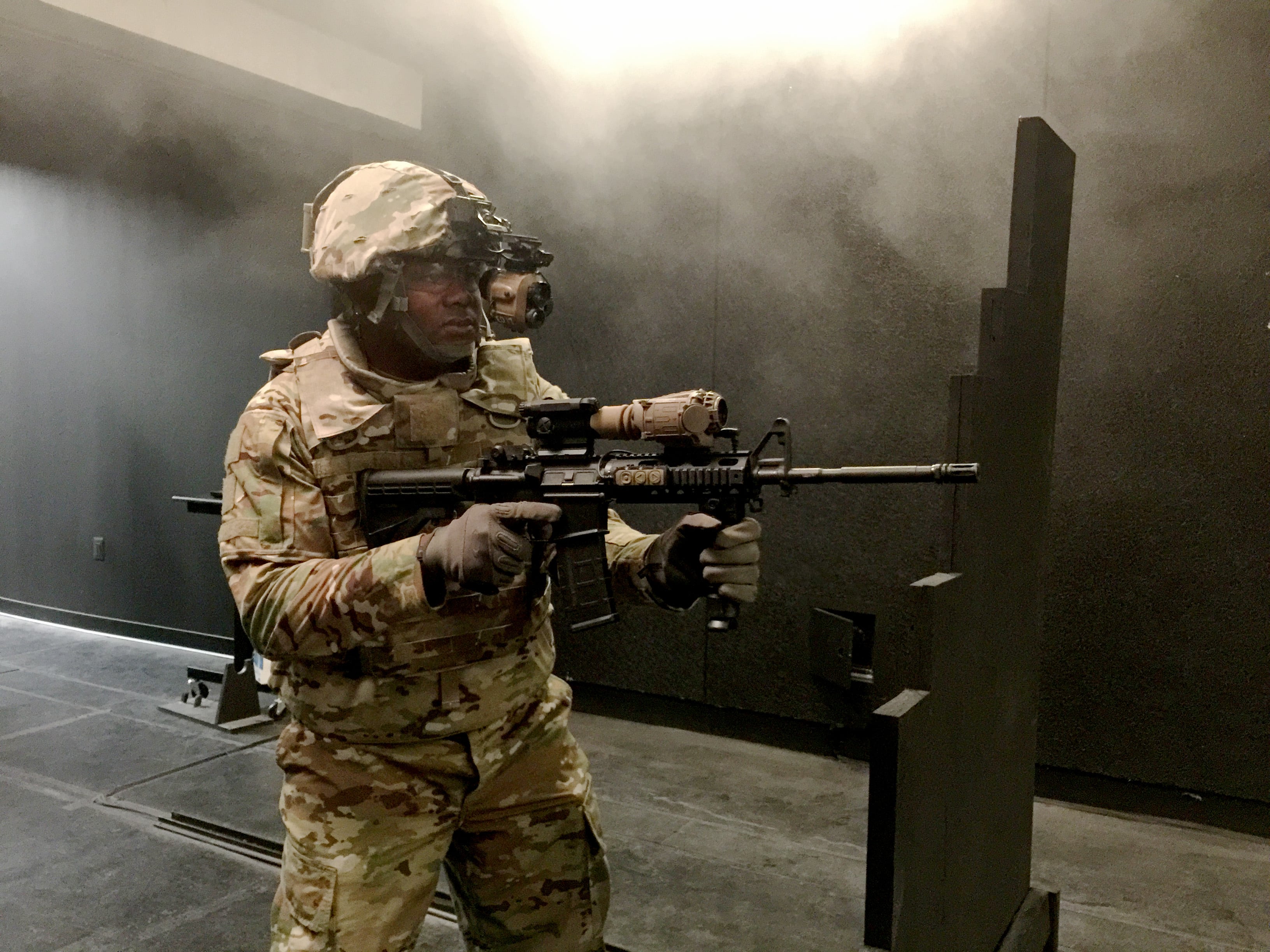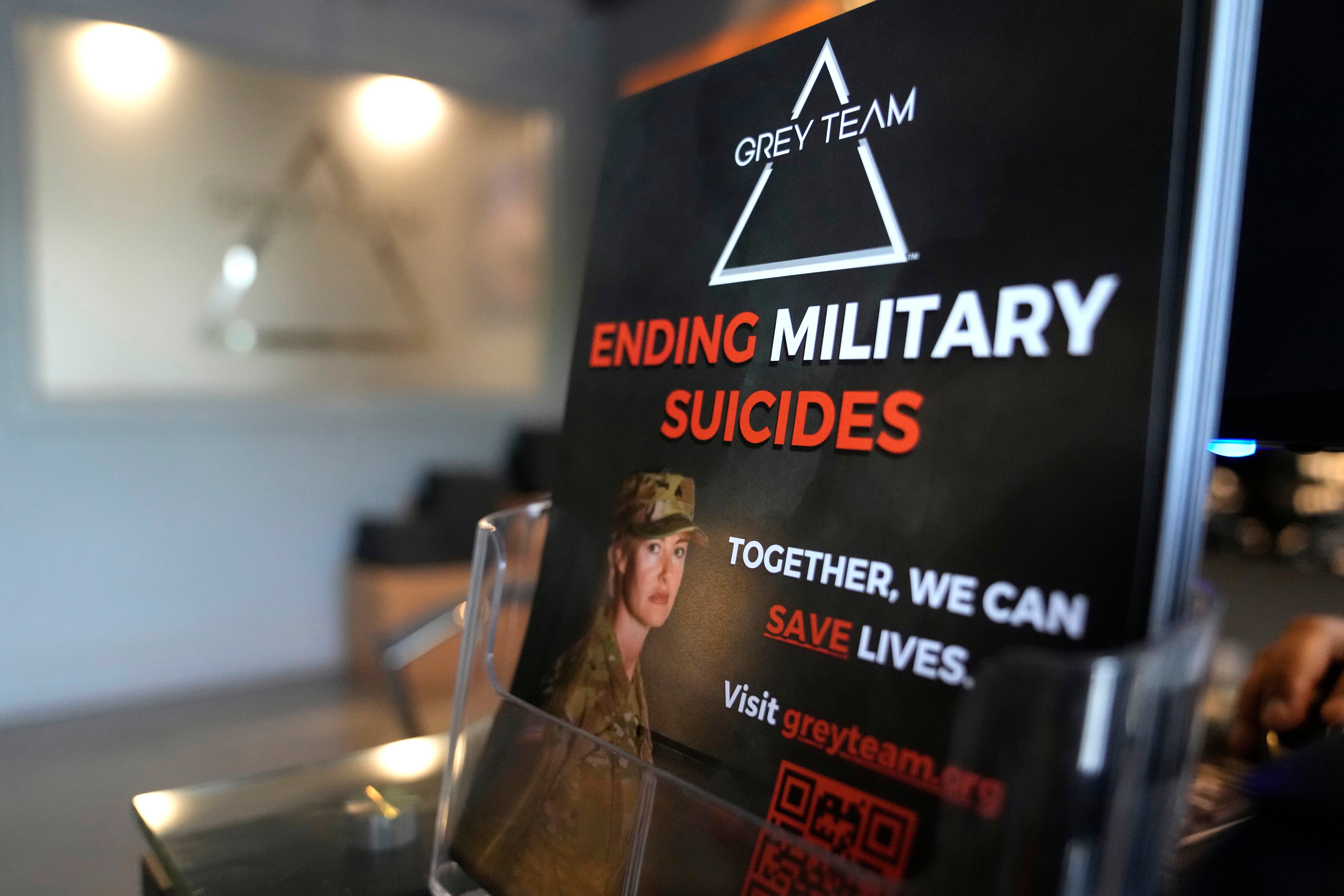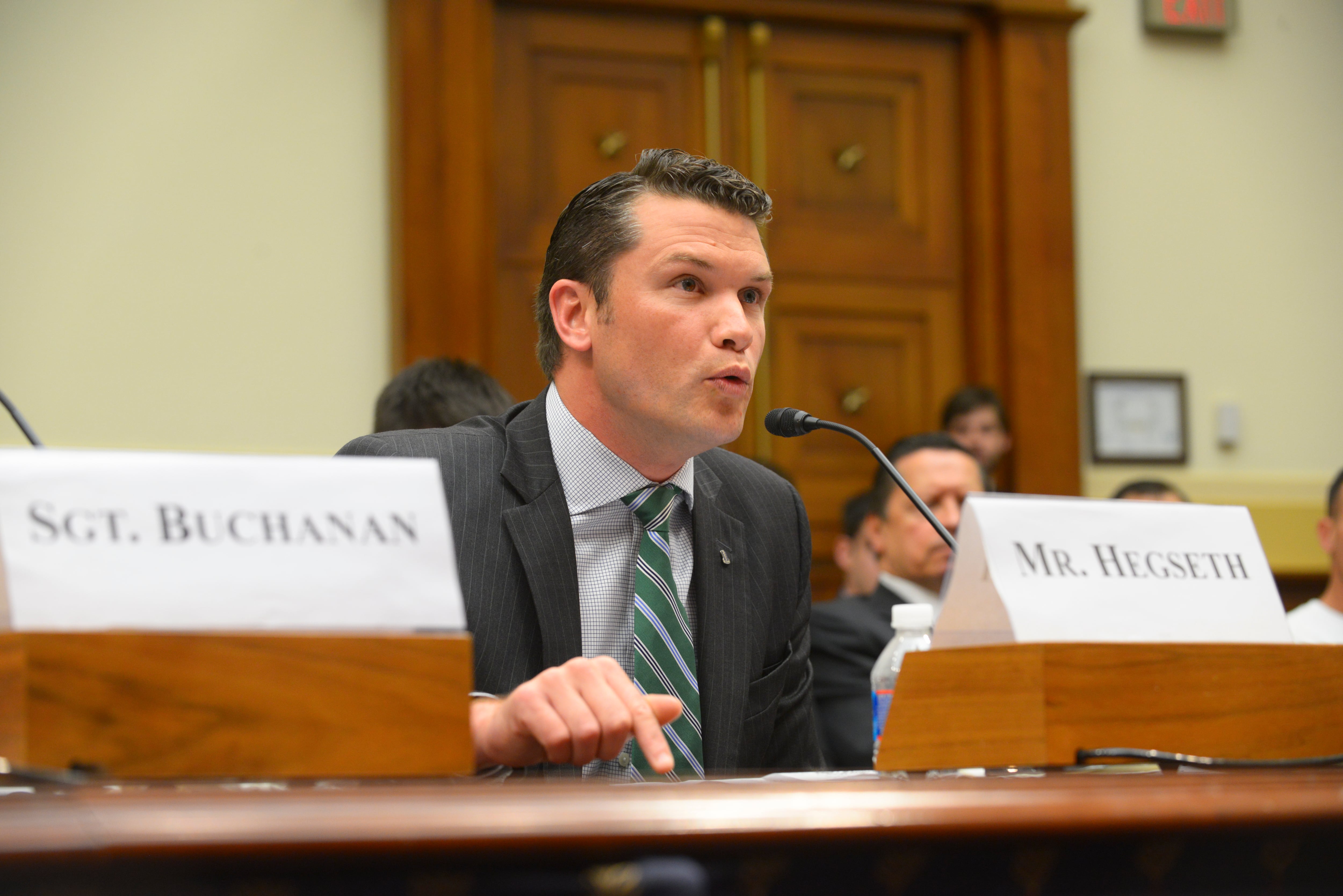A new night vision and weapon camera system allows shooters to fire around corners without exposing themselves and eliminates the dead time between seeing a target and firing when using night vision goggles.
The first-ever combination of night vision and target acquisition technology will allow soldiers and Marines to shoot around obstacles and see through smoke, fog and concealment like never before.
Researchers with the Army’s Program Executive Officer Soldier Maneuver Sensors have paired a next-generation night vision monocle, the ENVG-III, with the Family of Weapon Sights-Individual, or FWS-I to allow a shooter to view the battlefield through light-enhancing night vision and thermal vision.
The Army expects to order 36,000 of the FWS-I and 64,000 of the ENVG-III, with the first night vision units arriving at infantry units and special operations forces units beginning in fiscal year 2018, with the FWS-I devices arriving in fiscal year 2019, said Maj. Kevin Smith, assistant product manager, Soldier Maneuver Sensors.
The first Army units will receive the devices next spring.
The system simultaneously permits the shooter to see a 40-degree view while also seeing an 18-degree view from the weapon sight. This enables shooters to fire from multiple positions, around and above obstacles, without exposing themselves.
The “picture-in-picture” mode lets the shooter see two different directions at once. For example, if an infantryman were on foot patrol in a tight wedge formation, the soldier or Marine could patrol while observing their left flank, turn to give hand signals from their squad leader and still watch the flank from the camera on the rifle.
The real goal of PEO Soldier and developers BAE Systems and DRS Technologies, which are producing the units, is to cut down the target acquisition time for shooters. Current night vision is often cumbersome when shooting, requiring the shooter to see the target, then bring their rifle to their face to reacquire the target before firing.
With a wireless connection between the two devices the camera constantly feeds the image to the shooter so once the target is acquired the shooter can fire immediately.
Electronics engineer Dean M. Kissinger said the devices can withstand high illumination that foiled early-stage night vision systems. They have also been successfully tested against other technologies that would try to disable them, he said.
The concept for the integrated displays has existed for decades but the capability wasn’t a reality until the technology caught up, such as processor speed and reduced size and weight of night vision and thermal systems. Some of the previous systems were too large to mount on individual weapons.
The program is currently developing variants for crew-served weapons such as the M240 machine gun and for sniper rifle systems, Kissinger said.
The new system is compatible with the M16, M4 and M249 Squad Automatic Weapon.
The average price for the ENVG-III is $7,000 while the FWS-I costs $9,500 each, Smith said.
Program officials hosted media members at the Fort Belvoir, Virginia, testing and development facility on July 27. Members of the media fired the M4 carbine equipped with the new night vision and weapons sights at the indoor Night Vision Firing Tunnel.
Side-by-side comparisons at more than 75 yards with current night vision systems showed an immediate contrast with thermal. Multiple man-sized targets were visible with both systems at various distances. A man-sized target behind camouflage netting was invisible with standard NVG but visually jumped out immediately with thermal sights.
Soldiers at Fort Carson, Colorado, tested the devices in July, Smith said.
Todd South has written about crime, courts, government and the military for multiple publications since 2004 and was named a 2014 Pulitzer finalist for a co-written project on witness intimidation. Todd is a Marine veteran of the Iraq War.





